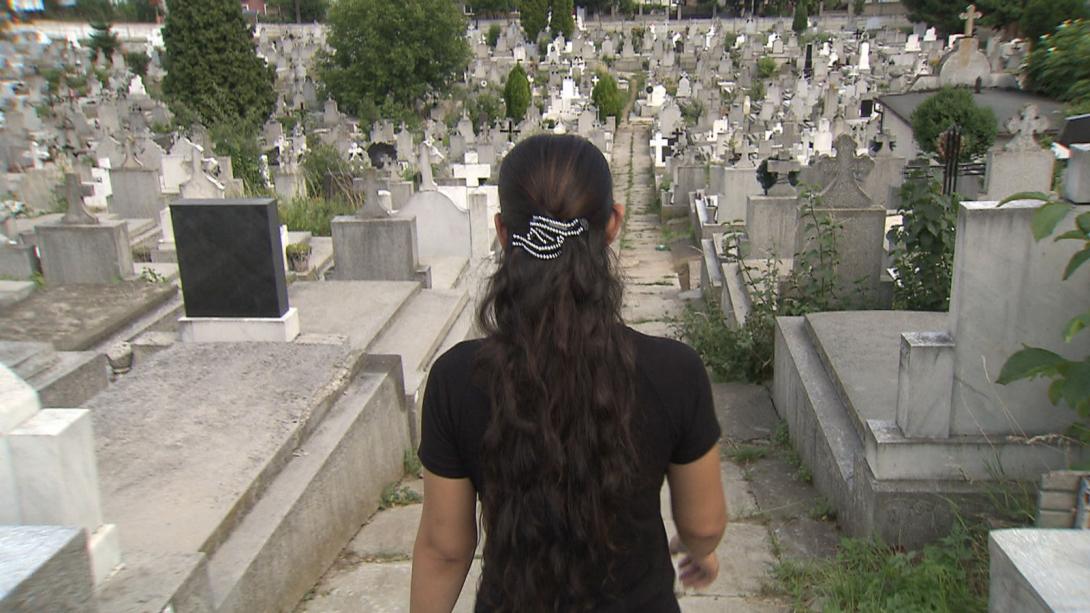
Synopsis
Ein Dokumentarfilm wird zur filmischen REVISION. Er rekonstruiert die Umstände, die 1992 zum Tod zweier Männer auf einem Feld nahe der deutsch-polnischen Grenze führten. Mit zunehmend beklemmender Dichte webt Scheffner ein Netz aus Landschaft und Erinnerung, Zeugenaussagen, Akten und Ermittlungen.
Am 29. Juni 1992 entdeckt ein Bauer zwei Körper in einem Getreidefeld in Mecklenburg-Vorpommern. Ermittlungen ergeben, dass es sich bei den Toten um rumänische Staatsbürger handelt. Sie werden bei dem Versuch, die EU-Außengrenze zu überschreiten, von Jägern erschossen. Diese geben an, die Menschen mit Wildschweinen verwechselt zu haben. Vier Jahre später beginnt der Prozess. Welcher der Jäger den tödlichen Schuss abgegeben hat, lässt sich nie beweisen. Das Urteil: Freispruch. dpa meldet: „Aus Rumänien ist niemand zur Urteilsverkündung angereist.“
In den Akten stehen die Namen und Adressen von Grigore Velcu und Eudache Calderar. Ihre Familien wussten nicht, dass jemals ein Prozess stattgefunden hat.
Mit REVISION wird ein juristisch abgeschlossener Kriminalfall einer filmischen Revision unterzogen, die Orte, Personen und Erinnerungen miteinander verknüpft und ein fragiles Geflecht aus Versionen und Perspektiven einer „europäischen Geschichte“ ergibt.
Credits
Buch Merle Kröger, Philip Schefffner
Regie/Schnitt Philip Scheffner
Kamera Bernd Meiners
Ton Pascal Capitolin, Volker Zeigermann
Dramaturgie Merle Kröger
Produktionsleitung Marcie K. Jost
Produktionsassistenz Celia Bouali
Regieassistenz Rumänien Gica, Adina Curta
Aufnahmeleitung Rumänien Silvia Gramer, CD!
Produktionsassistenz Rumänien Claudiu Maniacu
Sound Design Volker Zeigermann, Simon Bastian
Kinomischung Pierre Brand
Bildmastering Matthias Behrens
Online Studio Bild wave-line Berlin
Online Studio Ton Zeigermann_Audio Hamburg
Redaktion ZDF/arte Doris Hepp
Produzentin Merle Kröger
Koproduzent*innen
Marcie K. Jost, Meike Martens, Peter Zorn
Eine Produktion von pong film
In Koproduktion mit
Blinker Filmproduktion und worklights media production
sowie mit ZDF in Zusammenarbeit mit ARTE
Entwicklung gefördert durch
FFA
DEFA Stiftung
Produktion gefördert durch
Medienboard Berlin Brandenburg
Mitteldeutsche Medienförderung
Filmförderung Hamburg Schleswig-Holstein
Filmstiftung NRW
Deutscher Filmförderfonds
Kontakt Kinoverleih (Deutschland)
Real Fiction Filmverleih
Tel: +49 (0)221 9522 111
Email info(at)realfictionfilme.de
Visuals
Mehr Infos
-
festivals
Weltpremiere: Berlinale - Internationale Film Festspiele Berlin | Forum 2012
Internationale Premiere: Hot Docs Festival Toronto 2012Weitere Festivals (Auswahl):
- Dokumentarfilmwoche Hamburg
- Filmfestival goEast Wiesbaden
- DokFest München
- Neisse Film Festival
- Balkan Film Fest Bremen
- Transsylvania International Film Festival Cluj
- Documentary Film Festival Kosovo
- Zürich Film Festival
- Vancouver International Film Festival
- Doclisboa
- DocBsAs Argentina
- Regio Fun Film Festival Poland
- Duisburger Filmwoche
- CPH:DOX Kopenhagen
- DOkfest Kassel
- L'Alternativa Barcelona
- Jeonju International Film Festival
- Festival dei Populi Florenz
- Doc Est Iasia Romania
- Human Rights Film Festival Zagreb
-
preise
- nominiert für den amnesty international Filmpreis | Berlinale 2012
- Bester Dokumentarfilm | GoEast Film Festivals 2012
- Fritz-Gerlich-Filmpreis | Film Fest München 2012
- nominiert für den Deutschen Filmpreis 2013
- nominiert für den Preis der deutschen Filmkritik 2013
- Award of Excellence | Yamagata International Documentary Film Festival 2013
- Bild-Kunst Schnittpreis 2013
-
buch
GRENZFALL | Merle Kröger | Roman
erschienen im Argument Verlag Hamburg
GRENZFALL ist ein Roman, frei erzählt nach Ereignissen, die sich 1992, knapp zwei Monate vor den Pogromen in Rostock Lichtenhagen nahe der deutsch-polnischen Grenze zutrugen. Wir haben darüber einen Dokumentarfilm gemacht, der 2012 unter dem Titel REVISION im Kino läuft. Parallel zur Filmrecherche entstand die Idee, eine Geschichte zu schreiben, in der sich dokumentarische Fäden von damals fiktiv ins Heute spinnen. Der Kriminalroman gibt die Chance, emotionale und politische Momente zu verdichten und die Realität in einen Möglichkeitsraum umzudenken.
Merle Kröger, August 2012
ausgezeichnet mit- Krimi Preis 2013 (Platz 1 National)
- Stuttgarter Krimipreis 2013
-
fact sheet
Produktionsland: Deutschland
Produktionsjahr: 2012
Länge: 106 Minuten
Bildformat: XDCam/ 35 mm, Farbe
Tonformat: Stereo
Sprache: Deutsch, Romani, Rumänisch
Untertitel: Deutsch, EnglischAuf DVD erhältlich bei Filmgalerie 451